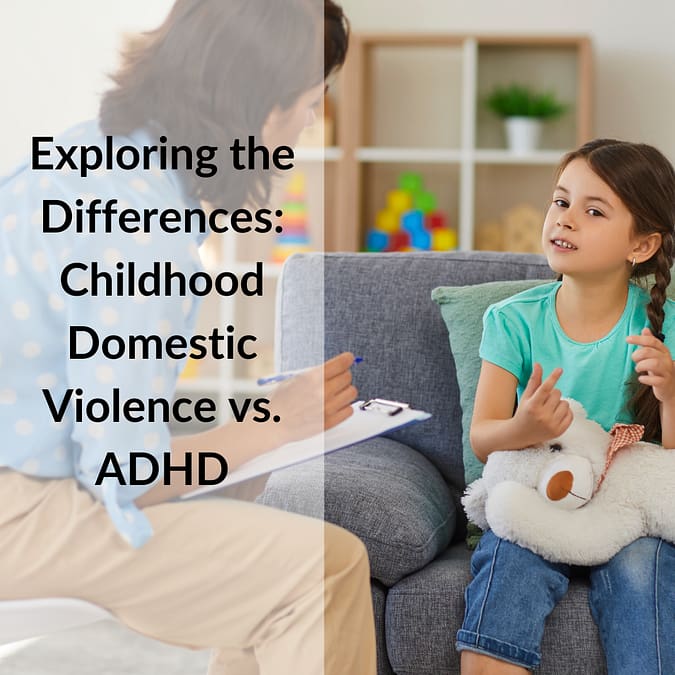You have been diagnosed with Attention Deficit Hyperactivity Disorder (ADHD). But do you feel that the source of your disorder has been fully uncovered?
During this back-to-school season, we have been focusing on addressing childhood adversities, as well as how it impacts a child’s learning and ability to thrive in school, socially and academically. ADHD is a chronic issue as well, often stemming from childhood trauma. It can also lead to continued mental health issues into adulthood.
What is Attention Deficit Hyperactivity Disorder?
Many will be told and in many cases, the primary reason for being diagnosed is due to heredity. Others may have that gnawing feeling that though genetics may play a part, there is still a need to look deeper into additional sources. For those adults who are seeking more answers or trying help another child or adult, here is the definition:
“ADHD (attention deficit hyperactivity disorder) is a neurological disorder that impacts the parts of the brain that help us plan, focus on, and execute tasks… is not a behavior disorder… is not a mental illness… is not a specific learning disability. ADHD is, instead, a developmental impairment of the brain’s self-management system.”
Childhood Trauma connections
More research is being done that is linking children’s and adults’ ADHD to the trauma experienced in their homes growing up. These traumas are often labeled as Adverse Childhood Experiences (ACEs). The 10 ACEs are:
- Physical abuse
- Emotional abuse
- Sexual abuse
- Physical neglect
- Emotional neglect
- Alcohol or drug abused by a parent
- Mentally ill parent
- Divorce
- Incarceration of parent
- Childhood Domestic Violence (CDV)
Childhood trauma is more and more known to be a predictor of ADHD symptoms that will continue into adulthood.
Childhood Domestic Violence (CDV) has striking similarities
It is the least known of the ACEs and can often be misdiagnosed as doctors and educators may not factor in or know of a child’s home life with domestic violence. CDV refers to exposure of children to violence within their homes, encompassing physical, emotional, or verbal abuse.
Understanding the distinctions between CDV and ADHD is pivotal, as these two issues present unique challenges for young individuals.
CDV encompasses a cycle of exposure to violence within the home, leaving a lasting emotional and psychological impact on children. In contrast, ADHD is a neurodevelopmental disorder characterized by impulsivity, hyperactivity, and focus difficulties, which can disrupt academic performance and social interactions. Yet both issues have similarities.
1. CDV inflicts deep emotional and psychological wounds, leading to lasting impacts on children’s mental well-being.
2. Signs of CDV in children include behavioral changes, withdrawal, anxiety, depression, and fear of parental figures.
3. Long-term effects can manifest as relationship difficulties, mental health issues, and challenges in forming secure attachments in adulthood.
ADHD has a negative impact on children’s learning
ADHD is a neurodevelopmental disorder marked by symptoms like impulsivity, hyperactivity, and inattention, often impacting children’s focus and self-control. It can hinder academic performance and social interactions due to difficulties in maintaining attention and managing impulsive behaviors. Common signs in children include trouble organizing tasks, forgetfulness, excessive talking, and restlessness.
Teachers and educators can be a big help in addressing their student’s individual needs to sustain learning and social growth in school. They may not be qualified to diagnose a child, but they can at least attempt to get the parents involved in taking steps such as the child taking an assessment, or seeing a health provider.
How to help those living with ADHD and CDV
Diagnosis and treatment strategies for both diverge. CDV assessment involves identifying psychological distress signs, whereas ADHD evaluation focuses on behavioral patterns.
CDV survivors benefit from therapeutic interventions addressing emotional wounds, while ADHD management centers on behavioral and pharmaceutical approaches. Yet, these conditions intersect, emphasizing their complexity. Overlapping symptoms heighten misdiagnosis risks, highlighting thorough evaluations. Emotional impacts drive the need for holistic care, addressing mental well-being alongside physical health.
A big change that can help diagnose ADHD correctly is to look at the overall picture of children, not only in the classroom, but at home. Assessments that take a more trauma-informed approach will ensure that children are receiving the correct therapies.
Raising awareness about CDV and ADHD cultivates understanding, fostering community support. Establishing networks for CDV survivors and inclusive spaces for ADHD-affected children is crucial. And early intervention and professional guidance can mitigate long-term effects.
Appreciating the contrasts and connections between CDV and ADHD spurs action, while through empathy, education, and steadfast support, we can reshape young lives’ trajectories.

